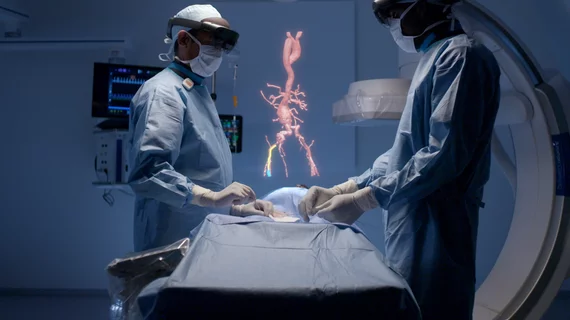Royal Philips has revealed the augmented reality concept for image-guided minimally invasive therapies it developed with Microsoft. The concept, which combines Philips’ Azurion platform with Microsoft’s HoloLens 2 computing platform, was unveiled at MWC Barcelona in Barcelona, Spain.
The project is designed to upgrade operating rooms by allowing physicians to perform minimally invasive therapies using “a 3D holographic augmented reality environment” they can easily control. A video detailing the technology is available here.
“The transition from open surgery to image-guided procedures has driven a seismic shift in improving patient outcomes and reducing costs—not least by dramatically reducing the length of time a patient stays in a hospital after their procedure,” Atul Gupta, MD, chief medical officer for image guided therapy at Philips and an interventional and diagnostic radiologist, said in a prepared statement. “On our Azurion platform we seamlessly integrate a range of data sources in a way that’s intuitive to understand and control. By collaborating with Microsoft and HoloLens 2 we can take it to the next level, immersing the physician in a tailored augmented reality environment.”
“Mixed reality is giving people new ways to interact with the digital and physical world, bringing the benefits of the digital revolution to entirely new experiences across the globe,” Alex Kipman, technical fellow in AI and mixed reality at Microsoft, said in the same statement.

